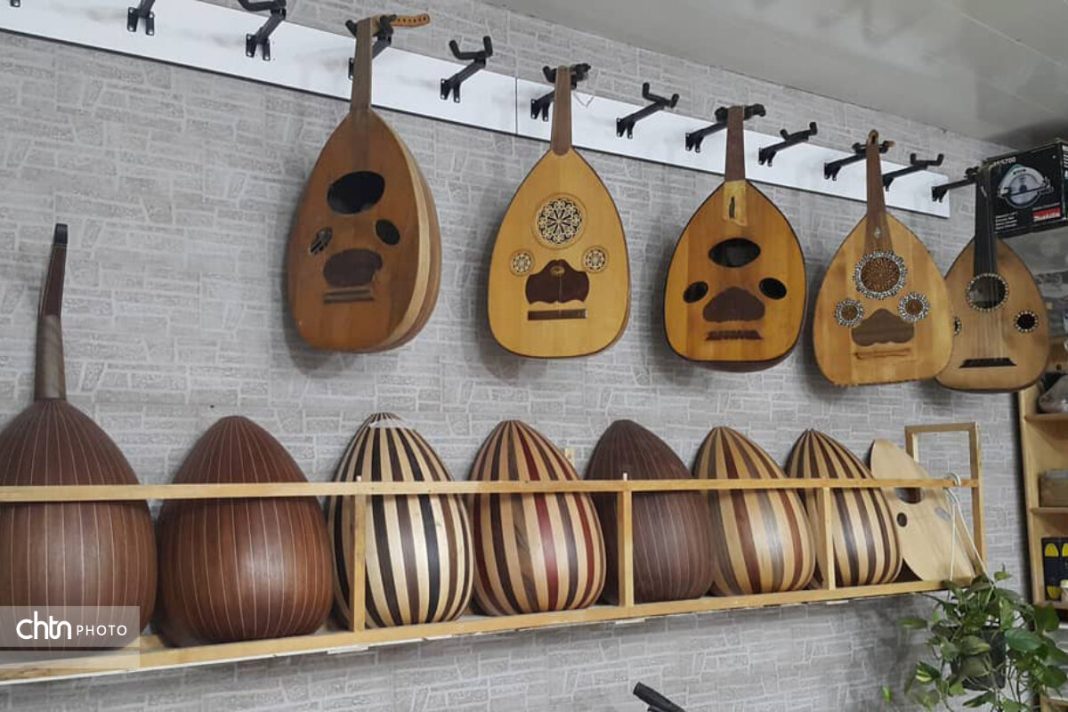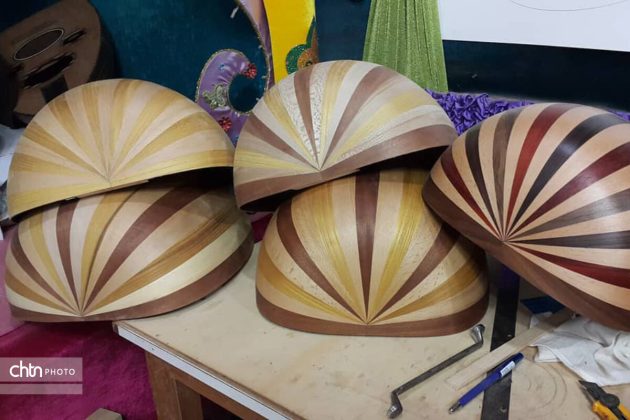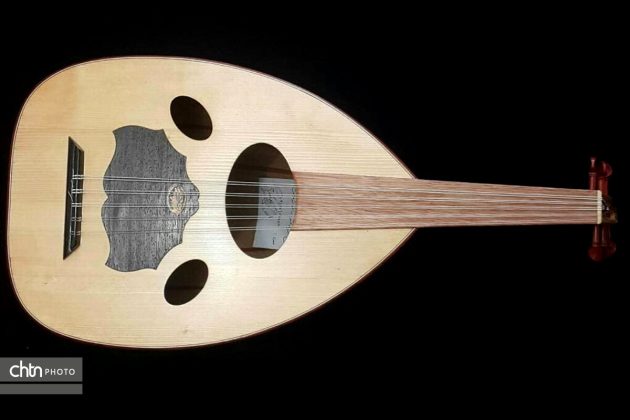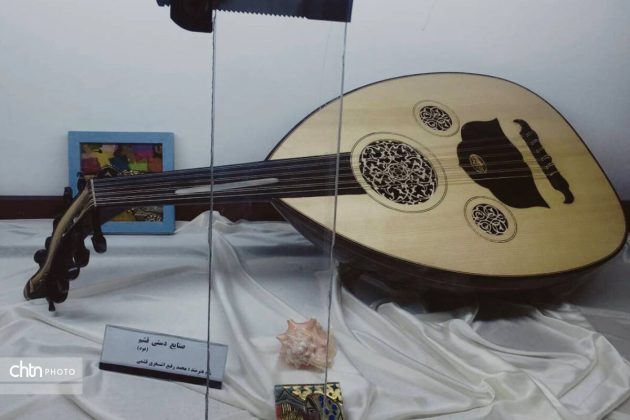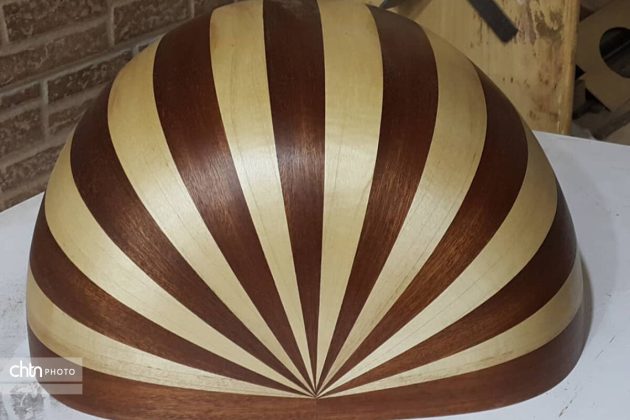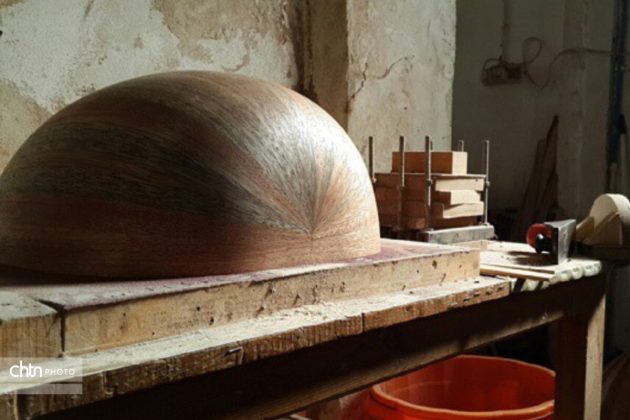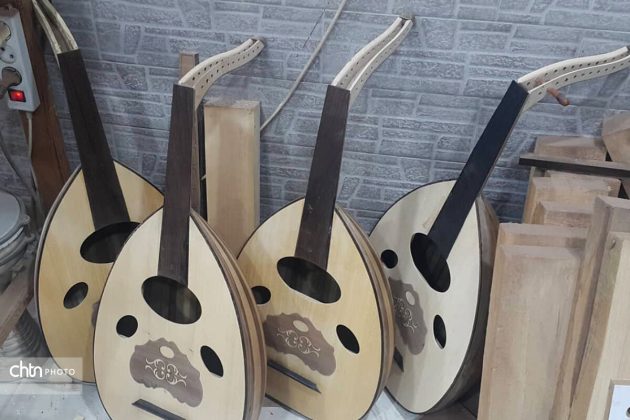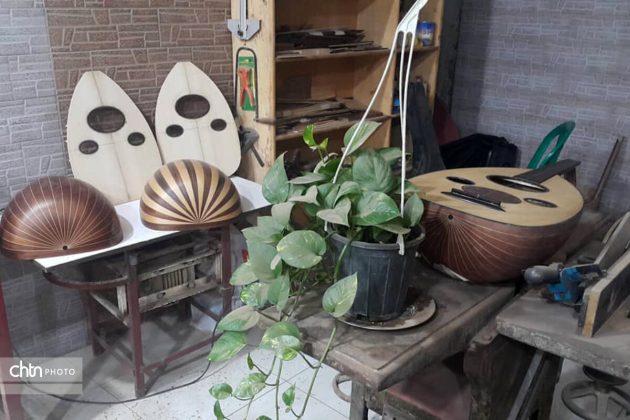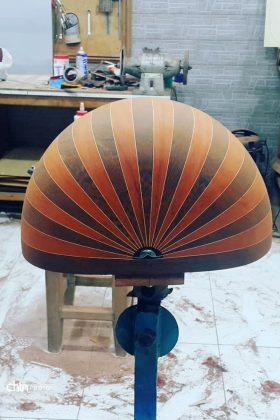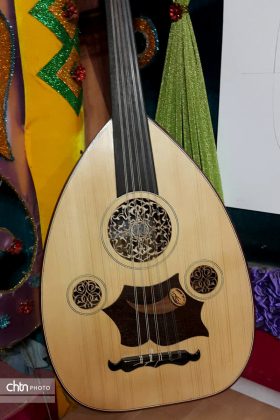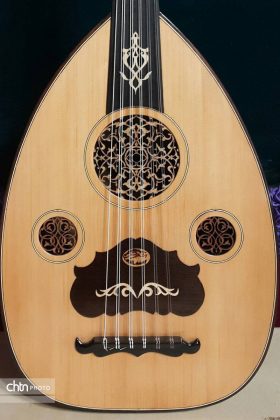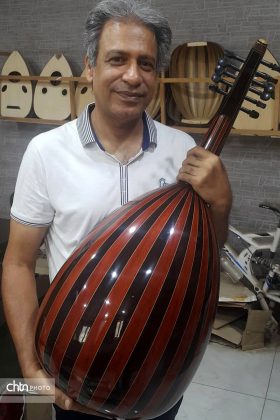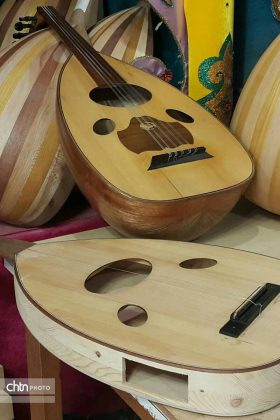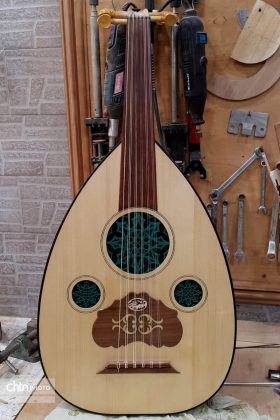History of the Oud
Archeological studies show the Oud dates back 5,000 years, that is, to the Sumer Civilization and the city of Ur. The Oud can be seen in Egyptian paintings that were drawn over two thousand years ago. The paintings depict musicians. From Egypt, the Oud made its way to other parts of the Middle East, including Iran and Saudi Arabia in the pre-Islamic period.
The famous Oud players of Iran were, among others, Barbod, Bamshad, Nakissa and Ramtin.
After Islam and in the following years when the Islamic caliphate was established and expanded, the musical instrument made its way to the farthest parts of the Muslim world, from China to Andalucía.

The Oud parts
Sound bowl: It looks like a pear made up of pieces of wood. The top plate or wajh is big enough to hold most of the length of strings. The top plate, also called the sound board, is made of pine wood. The empty circles on the top plate is made of bone in order to produce a better sound.
Bridge: The horizontal bridges that are connected to the plate prevent it from changing in form. The bridges are at five points from the plate towards the inside of the bowl.
Bar: The Oud has a wooden bar that is placed at the end of the bowl and actually holds the wire. There is usually some distance between the bar and the plate.
Neck: The Oud has a short wooden neck on which the hands were placed in the past. Today, the neck has no hands and it is about ten centimeters in diameter.
Pegbox: This is a box-like space that is hollow and is at the beginning of the handle where the pegs are placed.
Nut: This is placed between the neck and the pegbox with a height of one millimeter. The nut is in fact a thin and short piece of wood and the strings pass through its grooves.
String: The Oud has a 10-string set which are tuned in pairs. The strings are made of silk, nylon wires or sheep intestines with different thickness.
Plectrum: In the past, The Oud plectrums were made of bird feathers. But today, they are made of plastic, which is used by the right hand.
The length of the Oud is nearly 85 centimeters. The player of the Oud puts it horizontally on his thigh and plays the instrument with the plectrum.
Famous Oud makers
Ebrahim Ghanbarimehr has made new versions of the Oud for world markets by using his creativity to change the shape and image of Arabic Oud such as making the bowl smaller and the neck longer. For example, these innovations and skills in making the Oud were welcomed by famous players like Maestro Hossein Behrouzinia.
Mohammad Rafi Ash’ari is also one of the most skilled makers of the Oud in Iran. He played an important role in the promotion of this musical instrument and its export to foreign countries. He began making Ouds out of oil tin containers in 1985. In 1995, after reading the book “Setar Maker” written by late Mr. Chaichi, he became familiar with techniques of making musical instruments. He has been in the business professionally since 2002 and has also trained some pupils.
Ash’ari Oud making workshop on Iran’s Qeshm Island
This workshop belongs to Mohammad Rafi Ash’ari (born in Qeshm in 1966) who is one of the most reputable Oud makers of Hormozgan Province. Here are some pictures of Ash’ari’s Oud making workshop in Qeshm.
Other Iranian musical instruments
Undoubtedly, playing music is one of the most relaxing and invigorating arts and it is performed in the best possible way by Iranians. The art-loving people of Iran have been making all kinds of musical instruments since ancient times.
Other Iranian musical instruments than the Oud are Tar, Setar, Santur, Ney, Ghaychak, Qanun, Daf and Kamancheh.
Related Articles:
